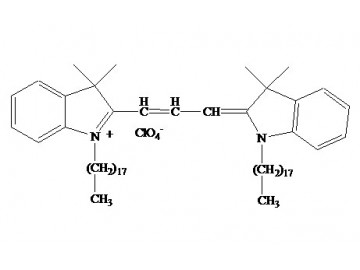| Background |
DiI (DiIC18(3)) is one of the most commonly used cell membrane fluorescent probes with orange-red fluorescence, its molecular formula is C59H97ClN2O4, its molecular weight is 933.9, and its CAS number is 41085-99-8. DiI is a lipophilic membrane dye that can gradually stain the cell membrane of the whole cell by lateral diffusion after entering the cell membrane. The fluorescence of DiI is very weak before it enters the cell membrane, and only after it enters the cell membrane can it be excited to emit strong fluorescence. It is often used together with DiA for dual-color labeling of the cell membrane. As a tracer or long-term tracer, DiI can be widely used in forward or reverse, living or fixed nerve cells or tissues. DiI usually did not affect cell viability. Dii-labeled neurons could survive for up to 4 weeks in vitro culture and up to a year in vivo. The migration rate of DiI on the membrane of fixed neurons was 0.2-0.6 mm/day, and the migration rate of dii on the membrane of living neurons was 6 mm/day. In addition to the fluorescent labeling of cell membrane, DiI can also be used to detect cell fusion and adhesion, cell migration during development or transplantation, detect the diffusion of lipid on the cell membrane by FRAP (light decolorization fluorescence recovery technique), detect cytotoxicity and label lipoprotein. After DiI staining, the fixation of paraformaldehyde (no other reagents such as methanol can be used) can be carried out, but the process of permeabilization after staining is not recommended. In addition, plasma membrane staining was also well performed after fixed permeabilization with 0.1% TritonX-100 at room temperature.According to the calculation of using 100 μL of staining working solution at a concentration of 10 μM, 10 mg of working solution can be used 10,707 times. |

Reviews
There are no reviews yet.